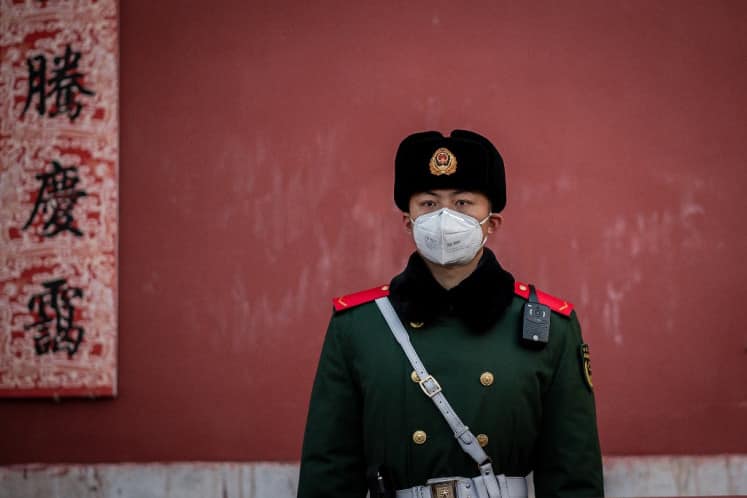China’s political system is brittle. It needs a more transparent, elastic and nimble system to identify challenges
China has come under siege by a host of unprecedented challenges, each exceptional and in theory life threatening to the People’s Republic. In a few short months, Beijing has been faced with the trade war with the US, Hong Kong protests, swine fever, and the pneumonia outbreak that started in Wuhan. All point at deep structural faults that might be addressed only by a systemic overhaul.
A list of the challenges
Number 1. The first challenge is the trade war with the US. On January 15, the US and China signed a mini trade agreement that paused the fierce friction between the two countries. The friction has many roots and extremely far-reaching consequences. It is at the heart of the global trade system established since the fall of the Soviet empire in the early 1990s. The crux of the matter is the lack of openness and transparency of the Chinese market and its political system. It also sprawls into technology, models of development, strategy and value systems.
All the issues draw in the whole world and are not simply bilateral. So far, the two parties decided on a temporary suspension. The US did it for tactical reasons, China for strategic aims. In America, President Donald Trump wanted to avoid a massive trade war that could dampen global growth and the American economy, and therefore lower the possibility of his reelection in November 2020.
For China, the goals in agreeing on a truce were more strategic. China was surprised by the trade clash with the US, underestimated American grievances for years and now wishes to gain some time to better prepare for a possible second round of tensions after November’s American election.
Number 2. The Hong Kong protests that began some nine months ago destroyed the pillar of diplomatic and economic development China established in the early 1980s when Beijing launched the idea of one country, two systems: that is, Beijing could rule China and Hong Kong according to two sets of rules.
In fact, this situation helped China to remain closed inside and open to the outside world. Hong Kong was a safety valve between the closed Chinese market and the open global markets. Beijing overlooked the structural complaints of the local population in Hong Kong, which was left hopeless while a few rich parties monopolized power and wealth in collusion with some powerful people in China.
This ongoing collusion has 30 years of history and will be extremely difficult to mend by itself.
Without Hong Kong’s crucial function, China would have to either open its markets or shut them down. Either choice could have bitter costs for Beijing. The protests are then undermining China’s capability for smooth transactions with the rest of the world. For months, pundits abroad thought Beijing would crack down militarily on the protests, causing bloodshed as it did in 1989 in Tiananmen, or it would simply surrender to the demonstrations. It did neither, and the situation is roughly under control, although it is still constantly evolving.
Number 3. The ongoing swine fever, which also started in the spring of last year, hits at the heart of China’s food chain. China produces and consumes more than half of all pork worldwide. The massive swine fever has prompted Beijing to cull at least half of its pigs, sparking huge inflation in pork and food prices and a surge in food imports from abroad.
The state promised compensation to farmers who destroyed their sick pigs, but Beijing often didn’t pay up. Authorities are strapped for cash, as the state is under a huge and mounting debt burden. Farmers thus are reluctant to raise pigs, and pork prices are rising. There is not enough pork in the world to satisfy Chinese demand’s shortfall, and there is no sign in sight of when and how the swine fever could end.
The origin of the problem is that pork production is very widespread and primitive. Farmers raise just a few pigs in basic conditions. Modern pig farms, with thousands of animals in good sanitary environment, would put millions of farmers out of work. Some 40% of China’s total population still lives in the countryside and it is dependent on the local agricultural economy. In developed countries maybe only some 10% of the population is in farmlands.
Those Chinese farmers, who would remain unemployed in case of modernization of the meat-growing industry, have no welfare state that would take care of them. The money earmarked to build a welfare state, before the 2008 financial crisis, went into boosting production and building infrastructure after 2008. Thus the state cannot have modern rural practices at the moment. Therefore, food could be unsafe for many years.
Number 4. The Wuhan pneumonia outbreak is just the latest unexpected development. About a month ago, sometime in December 2019, there were a few cases of atypical pneumonia in Wuhan, central China, possibly similar to the 2003 SARS outbreak. After waiting a few weeks, Beijing put Wuhan under quarantine and sounded a national and global alarm over this new SARS-like infection.
On the first day of Chinese New Year 2020, official numbers were as follows: 56 dead and nearly 2,000 infected. There are cases practically all over China, plus in the US, France, Australia, Japan, Singapore, Thailand and South Korea. This, as it was a very short time since it first began, illustrates the extreme danger of the virus.
Initially, the disease was thought to come from snakes or bats, and from some wet markets, which are officially forbidden but de facto tolerated as they provide extra cash for poor farmers.
There are also signs that the infection may not be contained, as it has escaped China already. It is not clear whether the Wuhan pneumonia is milder or worse than SARS, but it is certainly extremely serious, especially as it comes at this very delicate moment, when China is facing so many other problems.
The next challenges are twofold. First is the ongoing massive travel around China, as hundreds of millions of people travel for the ongoing Spring Festival. They traditionally go back to their families and then return to the large cities. Authorities have now imposed drastic restrictions on travels but it is uncertain if and how theose will work.
The second risk comes from the plenary assembly of the National People’s Congress in early March. Thousands of delegations from all over China will convene in Beijing. In 2003 this meeting helped spread SARS, which originated in Guangdong, to the capital. It is unclear what will authorities do this time. If by early March the disease will not be checked the plenary session could be undermined.
The system’s faults
All these challenges have roots in the Chinese system. The trade war was overlooked because of rigidity and the inability to understand the global scene. The same is true for Hong Kong. The swine fever was caused by structural faults in the rural system, and so was the Wuhan pneumonia, where bad management of food markets in cities combined with a large population and huge mobility creates constant dangers.
China so far has also proved its ability to meet these challenges – has not collapsed under them and not allowed them to spin out into a mind-boggling crisis. Other, less structured countries would have fallen apart already with all these issues. This proves the resilience of the Chinese system, which cannot be easily underestimated.
However, it is not clear how the system can continue to be resilient in the near future as there are more and new possible challenges coming.
In Taiwan, a political conflict is brewing. Reelected president Madame Tsai Ing-wen could push the envelope on the established agreement on “unity with one China” and thus create great embarrassment for Beijing. Taiwan is de facto independent and yet officially part of one China. If Taiwan more actively pushes the envelope, this will strain ties with Beijing. China has threatened war if the island were to move away.
Moreover, new unexpected challenges could pop up. Whereas signs of the trade war and the Hong Kong crisis had been there for a long time and were overlooked, swine fever and the Wuhan pneumonia came out of the blue, based only on the endemically faulty Chinese food production chain.
Other troubles could come from anywhere in China. The system is brittle, extremely fragile, closed, and burdened with huge debts hidden all over the place. Because it is not transparent, it is very hard even for the top leadership to gauge the reality of any given threat and react quickly. Moreover, the industrial and agricultural systems are midway between development and underdevelopment.
In theory, China needs a more transparent, elastic, and nimble political system to identify and face all these challenges. As the Chinese know very well, the bamboo that sways at the first blow of the wind is more resilient than a hard, rigid tree that is uprooted when the hurricane comes. Now there is not one but many hurricanes.
President Xi Jinping did well so far in handling these emergencies, but to prepare for future challenges, China needs a massive overhaul of its system. To do it now, under these circumstances, will not be easy but it could be even harder to push it farther down the line.
This article first appeared at Settimana News and Asia Times.
A police officer wears a mask to protect against the coronavirus as he stands guard at the Forbidden City in Beijing on January 25, 2020. Photo: AFP / Nicolas Asfouri
Francesco Sisci
Sinologo, editorialista, laureato e specializzato in Lingua cinese a Venezia e a Londra, è stato il primo straniero ammesso alla Scuola superiore dell'Accademia cinese delle scienze sociali di Pechino. Contribuisce a diverse riviste e gruppi di riflessione su questioni geopolitiche.
Dall’origine straniera all’icona americana: il fenomeno dello sport negli Usa
14 Mar 2024
Molti sport americani sono accomunati da un aspetto particolarmente curioso: raramente sono davvero nati sul suolo…
Roulette europea, francese o americana? Ecco un approfondimento
22 Set 2023
La roulette è un classico intramontabile dei casinò, amata da milioni di appassionati in tutto il mondo. Una delle…
Conto corrente online: perché è la soluzione migliore per i più giovani
21 Ott 2022
I millennial e i nativi digitali hanno dimostrato di essere una forza in grado di cambiare le carte in tavola nel…
L’intrattenimento online è dei casinò
31 Ago 2022
Il mondo dell’intrattenimento è vasto e ricco di opzioni. Con l’avvento di internet, poi, il settore non fatto altro…




